| Zeitschrift Umělec 2004/2 >> Klaus: Sermons and Thoughts from the Preacher of Dresden | Übersicht aller Ausgaben | ||||||||||||
|
|||||||||||||
Klaus: Sermons and Thoughts from the Preacher of DresdenZeitschrift Umělec 2004/201.02.2004 Jiří Ptáček | en cs |
|||||||||||||
|
The Ten Commandments
Deutsches Hygiene-Museum, Dresden, 19. 6.–5. 12. 2004 A flaming sword burns above our heads. The process of spiritual globalization began in full steam back when the prophet Mohammed recognized the prophet Moses. Whatever we do, we still bake in the same basin. At a time when an “undeclared” trans-cultural conflict culminates, and the hotter the hotplate of our life can be, there still is, in contrast to all pluralistic ideas of the Western world, one single spiritual vanishing point. As it is hard to recognize any historic process that bends astray from that horizon point, we work with the innumerable indications of the present. But everything that goes on around us has its symbolic degree that at least indicates back to that forgotten past. Faith and the associated ethical demands repeatedly emerge like that alien bursting from the guts of an otherwise unsuspecting host. Ten Commandments and Ground Zero Klaus Biesenbach is the chief curator of the renowned P.S.1, the New York Center for Contemporary Art. He was living in that town on the eleventh of September, 2001 when it unwantingly became “Ground Zero” — the place of both the end and the beginning. Klaus Biesenbach calls to to mind that New York is the most significant place outside the Middle East, where Christian, Jewish and Islamic elements encounter each other. Metaphorically speaking, he stands at the source. In June 2004, he traveled to his native Germany to install an exhibition for the old continent, on the Ten Commandments. The exhibition was devoted to that ancient inventory of commitments guiding behavior required to maintain the one God’s good will, so that our sojourn on this blue globe could have some sense. The inventory of essentials dates back to when God announced himself (via Moses), and left his Word to be passively consumed during the period when he wouldn’t even be willing to appear as a bush. Klaus Biesenbach took the task on himself to link the ten commandments with events we are experiencing at the outset of the twenty-first century. That line distinguishing evil from good started with the rhetoric of a militant pragmatic, then went through the very blood of society which it spilled through all forms that power exerts, and then even on those which we exert ourselves. It is understandable that artists would react to that, and so today we have to confront these consequential torrents of social and political documentation and fiction that together have no single origin and for that have a multitude of goals and directions. The Ten Commandments according to this look like that. The curator, who could choose from among a massive number of artists, selected sixty-nine, and it is obvious that he didn’t concern himself too much about expenses. One of the indications of the sign of the Western concept of magnanimity, is that it is founded on capital. See, art can be transported practically from any place to anywhere as soon as the freight workers get their bakshish. Even though a series of the most celebrated artworks are incessantly touring exhibitions, there is a network of institutions that ensures they always arrive at the right place at the right time. Media organizations, including Umělec, serve effectively as moveable catalogues. Klaus Biesenbach has sufficient status to put this advanced stage of artistic consumption to good use. So it isn’t infrequent that a visitor would find among those at The Ten Commandments some works that were already seen represented at other large shows, featured on a TV show or described in the press. Concerning new work, Biesenbach didn’t put in any substantial effort. On one hand making discoveries is tough, on the other hand, the audience to whom The Ten Commandments is primarily aimed might not necessarily be interested. Speak, Klaus. Speak Of course, it hardly matters whether we’ve previously seen a work or not. At the very least, it is special to learn what has indisputable quality — from an autopsy, or at least what in the realm of visual communication inspires an uproar. In the end what is most important is the interpretation imposed on it. In the front hall of the Deutsches Hygiene-Museum gallery, we are confronted with an array of wall-charts dissecting districts of the world with data about the consumption and marketing of selected commodities, including Coca-Cola plastics, and the distribution of marijuana and cocaine. We find out how much we watch TV and learn where wars rage and the life expectancy across continents. It shall be clear to us why the curator chose this data as we examine the rest of the exhibition. The first room is a dark chamber containing spot-lit cases with ritual articles from the three dominant faiths, each of which adopted the Ten Commandments as its own. And we must be prepared for each one of them, as they follow respectively each accompanied by an array of small works by a number of artists, assembled together as a brightly colored collage. Klaus Biesenbach introduces himself as a noble re-interpreter. Even if an artist had aimed some particular direction, works have been carefully extracted and set into a new frame. But that initial congenial sassiness slips slowly to become vexing sermonizing. Each commantment is shown to demonstrate how today’s civilization is disjointed from time. Should we expect some in-depth exploration into the respective subjects, we’d feel let down. The accumulative shift of the commandments when each is given equal space, reveals only some kind of mass of points of view and research. It is all covered by the symbolic speech of preacher Klaus Biesenbach. Let us go then at least to the description and the reflection of the first commandment: “You shall have no other God other than me.” Paul Noble and Sue Webster’s large symbol of a dollar leans against a wall, a cover for Fitness Magazine by Silvia Fleury is attached to the wall, on television we see how Orlan allows herself to be transformed into an ideal woman, and in the middle of a room, Olaaf Nikolaie’s statue-man-artist leans over a water pool like a modern-day Narcissus. Here, “the deification of the individual and his material order” is presented as a counterpoint to the godly statute and clearly set symbology. In his initial reflections the author of the installation presents a simple explanation: “People are turning more and more to themselves. The individual ego, one’s own body replaces the need for the Other, the higher power, the revered one.” One could declare that the ten commandments represent the lingering skeletal values of a number of forms of civilization. Distinguishing interpretations — in the metamorphosing contexts of individual cultures and in search of truth and its application — is counted among the most fundamental and interesting subjects for research, artistic or otherwise. To ignore that would be a shame to say the least. As it seems from his catalogue contributions, Biesenbach recognizes this, but in the exhibition he demonstrates a minimum of sensitivity. He doesn’t dare affirm something or refute anything. His power dissipates in the moment where he ought to transcend the frontiers of postmodern spectacle. That sermonic earnestness stumbles to empty garble. The recognition of powerlessness or distaste could be acknowledged as the single most significant gesture of the entire concept. However Klaus Biesenbach may simply be saying: “if I can’t do the crawl, at least I can tread water.” And finally: all those charts from the introduction to the exhibition come across like powerlessly splashing in water. Most likely they offer the impression of a sophisticated approach. But they seem more like some diligent research of National Geographic. Media Biesenbach As the charts and the catalogue suggest, Biesenbach is interested in the character of the world of mass media and takes on some of its rules. Not wishing to bore, he doesn’t focus, but instead hops restlessly from one thing to the next. Nevertheless, as he does seek to engage interest in an idea, he arrives at the religious-ethical code. This really does invoke a certain pressure, but since he doesn’t want to bore, he spreads it out in sections to be linked with the one single purely media slogan: “everything is otherwise.” Success is guaranteed; a study of the frontier of plural communication among artists — a specific group of people – would be beyond the strength of the average spectator. But does one not feel underrated? In my review of the exhibition of the Guma Guar group, I defined mass media mechanisms as affective pornography. For The Ten Commandments, the gallery performs a similar media function, and as such it offers up a hedonistic hysteria. Lots of money was poured into this project to ensure that the decent Central European public would be shocked. People will talk about it over morning coffee and in the end most likely determine that the most sublime aspect was the richness of preparation, in which 69 artists were a party. Its the same information one gets from the evening news; the puzzle needn’t be so perfect. And any “different point-of-view” of the artists, subducted by the banal rhetoric of Klaus of Dresden, will be forgotten forever.
01.02.2004
Empfohlene Artikel
|
|||||||||||||
|
04.02.2020 10:17
Letošní 50. ročník Art Basel přilákal celkem 93 000 návštěvníků a sběratelů z 80 zemí světa. 290 prémiových galerií představilo umělecká díla od počátku 20. století až po současnost. Hlavní sektor přehlídky, tradičně v prvním patře výstavního prostoru, představil 232 předních galerií z celého světa nabízející umění nejvyšší kvality. Veletrh ukázal vzestupný trend prodeje prostřednictvím galerií jak soukromým sbírkám, tak i institucím. Kromě hlavního veletrhu stály za návštěvu i ty přidružené: Volta, Liste a Photo Basel, k tomu doprovodné programy a výstavy v místních institucích, které kvalitou daleko přesahují hranice města tj. Kunsthalle Basel, Kunstmuseum, Tinguely muzeum nebo Fondation Beyeler.
|







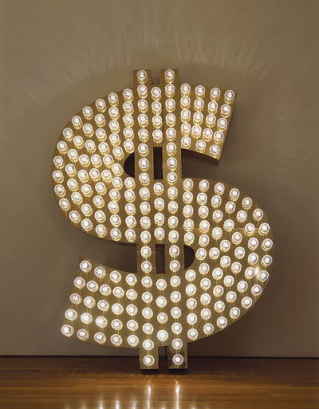
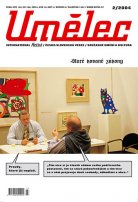














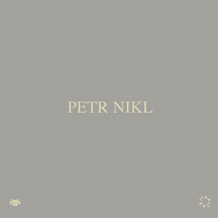




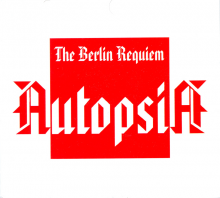

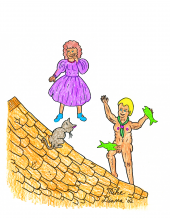
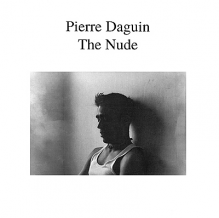


 We Are Rising National Gallery For You! Go to Kyjov by Krásná Lípa no.37.
We Are Rising National Gallery For You! Go to Kyjov by Krásná Lípa no.37.
Kommentar
Der Artikel ist bisher nicht kommentiert wordenNeuen Kommentar einfügen